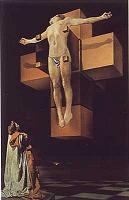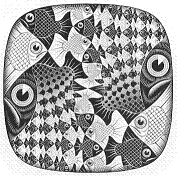Affirmation of Place and Time:
East Coker and Grand Rapids
This morning’s meditation:
“Let us talk together with the courage, humor, and ardor of Socrates.
In that long conversation, we may find ourselves considering something Plato’s follower Plotinus said long ago about ‘a principle which transcends being,’ in whose domain one can ‘assert identity without the affirmation of being.’ There, ‘everything has taken its stand forever, an identity well pleased, we might say, to be as it is…. Its entire content is simultaneously present in that identity: this is pure being in eternal actuality; nowhere is there any future, for every then is a now; nor is there any past, for nothing there has ever ceased to be.’ Individuality and existence in space and time may be masks that our sensibilities impose on the far different face of quantum reality.”
— Peter Pesic, Seeing Double: Shared Identities in Physics, Philosophy, and Literature, MIT Press paperback, 2003, p. 145
A search for more on Plotinus led to sites on the Trinity, which in turn led to the excellent archives at Calvin College in Grand Rapids.
A search for the theological underpinnings of Calvin College led to the Christian Reformed church:

“Our emblem is
the cross in a triangle.”
The triangle, as a symbol of “the delta factor,” also plays an important role in the semiotic theory of Walker Percy. A search for current material on Percy led back to one of my favorite websites, that of Percy expert Karey Perkins, and thus to the following paper:
The “East Coker” Dance
in T. S. Eliot’s Four Quartets:
An Affirmation of Place and Time
by Karey Perkins
For a rather different, but excellent, literary affirmation of place and time — in Grand Rapids, rather than East Coker — see, for instance, Michigan Roll, a novel by Tom Kakonis.
We may, for the purposes of this trinitarian meditation, regard Percy and Kakonis as speaking for the Son and Karey Perkins as a spokesperson for the Holy Spirit. As often in my meditations, I choose to regard the poet Wallace Stevens as speaking perceptively about (if not for, or as) the Father. A search for related material leads to a 1948 comment by Thomas McGreevy, who
“… wrote of Stevens’ ‘Credences of Summer’ (Collected Poems 376),
On every page I find things that content me, as ‘The trumpet of the morning blows in the clouds and through / The sky.’
A devout Roman Catholic, he added, ‘And I think my delight in it is of the Holy Spirit.’ (26 May 1948).”
An ensuing search for material on “Credences of Summer” led back, surprisingly, to an essay — not very scholarly, but interesting — on Stevens, Plotinus, and neoplatonism.
Thus the circle closed.
As previous entries have indicated, I have little respect for Christianity as a religion, since Christians are, in my experience, for the most part, damned liars. The Trinity as philosophical poetry, is, however, another matter. I respect Pesic’s speculations on identity, but wish he had a firmer grasp of his subject’s roots in trinitarian thought. For Stevens, Percy, and Perkins, I have more than respect.































